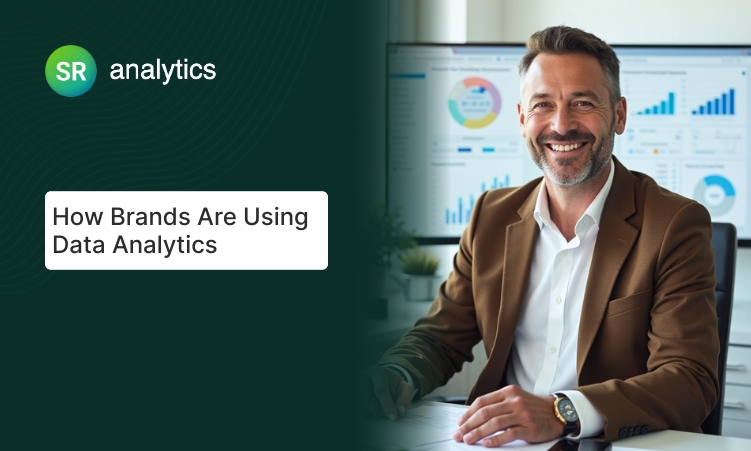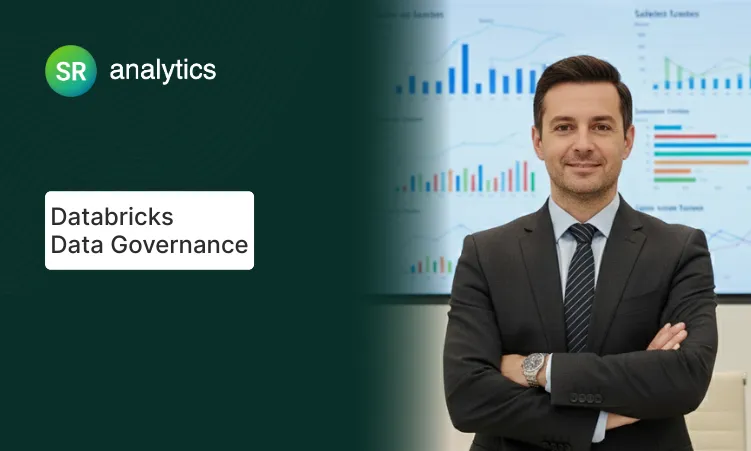In today’s hyper-connected world, where information travels faster than light, if you are still waiting for the right time to invest in data analytics, it’s now or never! Data-driven organizations are more likely to acquire customers and have 600% higher chances of retaining them. With the correct use of big data, companies have reported an average 8% increase in revenues and a 10% reduction in expenses.
So, let’s see how these companies make the most of data analytics to get a competitive edge.
Introduction
In the words of Gartner Inc.’s Senior Vice President and Global Head of Research, Peter Sondergaard, “Information is the oil of the 21st century, and analytics is the combustion engine.” Every minute data is being generated around us.
Leveraging data can help you make informed decisions, adapt to trends, and stay competitive. With the help of advanced data analytics tools, you can study the vast amount of data that’s being generated every moment.
Furthermore, the advanced visualization tools and machine learning, will effectively improve customer satisfaction, reduce cost and overperform revenue goals. Thus, by harnessing data analytics solutions effectively, your business will not just survive but thrive in the data-driven era.
But, like everything else, data analytics also has an interesting journey
The Journey of Data Analytics: From Excel Sheets to AI Innovation
In the early days of business computing, uses of computers were limited – data was tracked manually to track demand, pricing, and customer behaviour. As companies expanded globally, the volume of data grew exponentially, creating a pressing need for more efficient data management tools.
The entry of the spreadsheet
Thanks to technology, it came in spreadsheets, most notably MS Excel. From the late 20th to early 21st century, it was widely used for essential data-analytics tasks. With a structured tabular format for organizing data, it started gaining prominence in most organizations.
People could easily enter data, maintain it and also present it using charts & graphs. But, spreadsheets started lagging and becoming error-prone as data size increased.
Around the same time, the extensive acceptance of the internet led to a boost in data generation. Basic data and analytics were not helping organizations anymore. They needed deeper and more accurate insights, on large sets of data, which spreadsheets were not suitable for.
The upsurge of business intelligence and data analytics
Businesses shifted to relational databases like SQL and Business Intelligence (BI) tools like Tableau and Power BI. These tools allowed them to gather data from different offline and online sources, structure it, and run faster and accurate queries.
Businesses started getting access to more accurate data through interactive dashboards. Thus, empowering them to derive insights more efficiently. Some of the key benefits of these tools are:
- Being drag-and-drop tools, even non-techies could use these tools to derive insights.
- Can handle larger datasets and from different data sources
- Visualizations are more impactful
- Complex analysis can be performed with simple codes
BI tools not only helped business analysts but as executives and managers could also explore data independently, it nurtured a culture of data-driven decision-making throughout the organization.
However, as activities kept moving online and social media became an integral part of our lives, the exponential growth in data had no stopping!
The Era of Ai data analytics
Currently, we are in the era of AI-driven data analytics, where any amount of data can be structured, and anomalies can be detected in real time using deep learning and AI. BI tools like Power BI are also integrated with AI.
Starting from Q&A & Key Influencer visuals to detecting anomalies in data & predicting future trends, these tools are well-equipped to help you gain insights from large datasets.
Now that we have seen how data analytics software has evolved, let’s see how the big companies are using data analytics platforms.
Real-World Examples of Data Analytics in Action
Boosting Customer Acquisition & Retention
Challenge
Increasing competition and customer expectations put the global cola leader, Coca-Cola in a situation, where they had to find a way to retain customer loyalty.
Solution
They started exploring data analytics strategies to study their customer’s emotional quotient and understand their needs. With the use of mobile apps and QR codes,Coca-Cola started taking feedback from customers and tracked their behavioural data.
Thus, it helped them to tailor their promotions and offers. Their advertisements resonated more with the customers’ aspirations. And their personalized rewards and new products helped them gain more customers.
Delivering Powerful Marketing Insights
Case Study: Netflix’s Recommendation Engine
Challenge
Netflix is an ad-free OTT. Its major earnings are from subscriptions. So,they needed to churn engaging content for its customer base.
Solution
Netflix’s win-back curve of subscribers is steeper as compared to its competitors.In 2023, 61% of Netflix subscribers were back within a year of cancelling their subscriptions. And it’s possible because they do not move back from spending on AI for data analytics.
They use machine learning & deep data insights for predictive analysis. Their AI-assisted recommendation system, not only helps them retain customers but also saves millions per year.
No doubt why Netflix provides accurate suggestions based on the movies and shows that we have watched! And we rely so much on the “Because you Watched” section of this OTT platform.
Enhancing Risk Management
Case Study: UOB Bank’s Risk Calculation System
Challenge
Using traditional risk assessment methods banks consumed around 18 hours to calculate the bank’s total value at risk (VaR). It was time-consuming and restricted the ability to respond swiftly to upcoming threats.
Solution
One of the classic examples of the use of AI for data analytics is UOB’s implementation of an AI-powered Anti-Money Laundering (AML) system. With the help of name screening & transaction monitoring, it analyses bulk transactions to identify suspicious threats.
Faster risk assessments empowered UOB to make prompt and informed financial decisions.
Driving Product Innovation & Development
Case Study: Amazon Fresh & Whole Foods
Challenge
Amazon has had its presence in e-commerce since 1995. However, when it started expanding its grocery market through Amazon Fresh & acquisition of Whole Foods, it faced unique challenges in the grocery market. One of their biggest hurdles was optimizing grocery logistics and inventory.
Solution
By deep-diving into historical purchase patterns, weather forecasts, social media trends, and cultural events, they started predicting customer demand. With the help of on-time key KPIs like Stock cover & Sell Through visuals, they enhance inventory management in alignment with local consumer preferences.
Furthermore, to facilitate faster deliveries, Amazon incorporates advanced data analytics technologies, like machine learning and micro-fulfillment centers.
Optimizing Supply Chain Management
Case Study: PepsiCo’s Inventory Forecasting
Challenge
Another global leader in food and beverage, PepsiCo faced inadequacies in its heritage inventory forecasting systems. Thus, posing challenges in its ability to meet fast-changing consumer demands efficiently.
Solution
Using their large database, they implemented a strategy based on real-world factors, like market trends, consumer purchase patterns and socio-economic environment. It helps them analyze complete data sets, starting from warehouse inventories to point-of-sale data. Thus, improving demand forecasting .
Also, by making the most of supply chain data analytics , they optimize their supply chain and reduce waste. Accurate demand forecasting, aids them to align production and minimize stockouts, resulting in improved financial performance.
By now you must have understood how even the big leaders have taken the help of data analytics, and they still invest in it. Data analytics is for businesses from every sector and necessary to survive in this competitive world.
Does Data Analytics Help Your Business?
Your business & online media are churning out various datasets like customer behaviour, geographic & political scenarios, weather trends, etc., every minute. If you can analyze it and use it, you’re bound to benefit in the following ways:
Leveraging SR Analytics for Comprehensive Insights
Knowing how data analytics can benefit your business is not enough- you need to partner with a data analytics company, which will understand your business, and your KPIs and can guide you with fruitful data insights.
At SR Analytics, we will help you with:
AI-powered data collation – Using progressive AI tools collate, combine and analyze data from different platforms like Facebook, Google and other online & offline sources. Thus, helping you to track real-time happenings.
Tracking key metrics – The real-time KPIs, presented through interactive reports will help you make prompt decisions, refine your branding in accordance with public sentiments, plan your inventories & target the right audience.
Conclusion
Big data has revolutionized industries by enabling smarter decisions, improving customer retention, and driving revenue growth. From the manual tracking of early business days to AI-powered insights today, data analytics has proven to be a game-changer.
In this fast-paced digital world, if you delay adopting analytics tools, you are at the risk of falling behind more agile, data-driven competitors.
The time to act is now as leveraging data is not just to survive, but to lead. Explore advanced platforms like SR Analytics to unlock the full potential of your data and turn insights into a sustainable competitive advantage.














